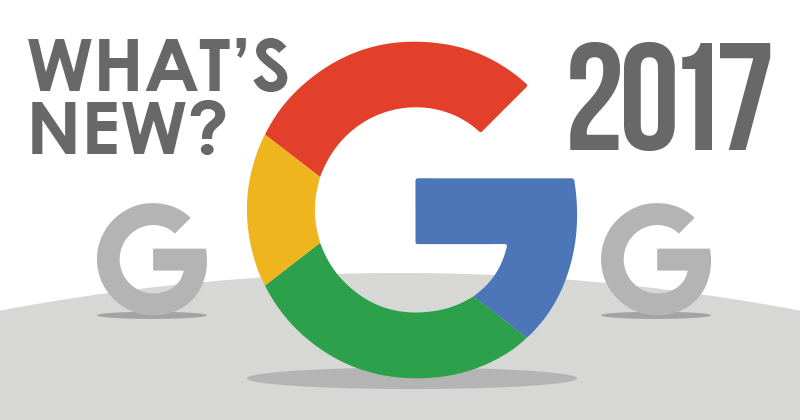What’s New for Marketers with Google in 2017?

In this year’s Google Marketing Next, Google introduces several new products along with some upgrades to products, all of which are designed to help marketers meet the challenges of tomorrow and today. Marketers, according to Google, need to put the customer first when it comes to their strategy as customer expectations are only increasing. And Google’s own research shows that:
- If an advertiser is perceived as being helpful it has a positive impact on purchases. However, less than 1/3 of brand experiences are described as helpful.
- After seeing a relevant ad, 91% purchased or plan to purchase.
Google outlines three new business realities that marketers will face:
- Smarter with Data—Marketers must work smarter with their data; your marketing must be driven by insights about where people are in their buyer’s journey. Consumers, especially for digital, will have many micro marketing touchpoints before they buy.
- One Step or One Second—Consumers want things now and they want them fast. Google found that if a mobile page load took 7 seconds, the probability of a bounce more than doubles. They also found that conversions can fall by up to 20% for every second of delay.
- Non-Line Assistance—Consumers no longer distinguish between online and offline. As Google states, “The customer is now the channel.” Customers move seamlessly between the two, for example, researching a product before visiting a store, therefore, marketers now must take this into account.
All the product innovations and upgrades all help marketers meet the above outlined challenges.
Is My Marketing Working?
This is one of the biggest questions Google tries to help you answer this year with the release of its new products, Attribution and Attribution 360 (for large enterprises). Pulling together data from AdWords, Analytics and DoubleClick, Attribution and Attribution 360 will help you to measure your marketing across all the touchpoints, and across multiple channels and multiple devices. Google’s attribution model switches marketers to data driven attribution model, which allows you to calculate how much credit each touchpoint deserves rather than using last-click attribution, giving you much better accuracy in reflecting how marketing actually works.
Am I Reaching the Right People Effectively?
With the rise of cross-device usage (30% of people use five or more devices), how efficiently are marketers reaching the right people? Google recognizes this challenge and to combat it, they’ve introduced Unique Reach Reporting in AdWords and DoubleClick. Unique Reach Reporting not only measures how many people we’re shown your display and video ads, but de-dups them across devices, campaigns and formats, letting you easily find out how many people your ads reached and how many times people saw them. With Unique Reach Reporting, you’ll be able to find wasted advertising and spend that money elsewhere.
Making Products Better
Some of the upgrades Google is rolling out:
Google AMP (Accelerated Mobile Pages Product): Originally rolled out 18 months ago, over 2 billion pages are already published, all loading under one second. Google has expanded AMP to include a) AMP pages from Search Ads and b) AMP ads on Google Display Network. This helps ensure that ads load faster and users have a better experience with a brand at every interaction.
Store Visit Measurements: Originally launched over two years ago to connect online activity and offline store visits. Google has expanded it to include Location Extensions and Store Visits for YouTube. According to Google, 50% of people look for a video about a product or service before visiting a store. Therefore, they are introducing two tools to help marketers measure this activity more accurately, the first one lets you import transaction data into Google AdWords to see sales and revenue at the campaign or device level, the second lets you take advantage of third-party partnerships to get store sales data.
Other Productivity Improvements:
- Google Analytics will now have a landing page tab for measurement of landing pages only.
- AdWords is integrating with Google Optimize, so you can easily design and test new landing pages in minutes.
- DoubleClick Bid Manager brings data and technology to campaign manager.
- Google Assistant can now tell a person where a product is located at the nearest store (based on stores giving Google inventory information).
To find out more, watch the video or read the blog.
